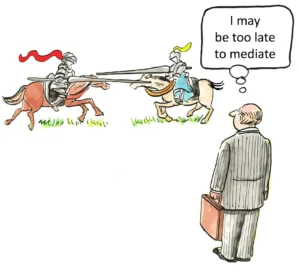Understanding the Multiplier Method in Personal Injury Cases
The multiplier method is a crucial concept in personal injury law, serving as a fundamental approach to calculating non-economic damages in injury claims. This method provides a structured way to quantify the intangible losses suffered by plaintiffs, such as pain and suffering, emotional distress, and loss of enjoyment of life. By applying a numerical multiplier to the economic damages incurred, attorneys and insurance adjusters can estimate a fair compensation amount for these less tangible, but equally important, aspects of a personal injury case.
At its core, the multiplier method involves taking the total amount of economic damages – such as medical expenses and lost wages – and multiplying it by a factor typically ranging from 1.5 to 5. The specific multiplier used depends on various factors related to the severity and impact of the injury. This approach aims to provide a reasonable estimate of non-economic damages, which are inherently more subjective and challenging to quantify than direct financial losses.
The significance of the multiplier method in personal injury cases cannot be overstated. It serves as a starting point for negotiations between plaintiffs and insurance companies, offering a systematic way to approach the complex task of valuing pain and suffering. However, it’s important to note that while widely used, the multiplier method is not a one-size-fits-all solution. The application of this method requires careful consideration of the unique circumstances of each case and a nuanced understanding of legal precedents and local practices.
The Mechanics of the Multiplier Method
To fully grasp the multiplier method, it’s essential to understand its mechanics and how it’s applied in real-world scenarios. The process begins with a thorough calculation of all economic damages related to the injury. These typically include medical bills, rehabilitation costs, lost wages, and any other quantifiable financial losses directly resulting from the incident.
Once the economic damages are totaled, the next step is determining the appropriate multiplier. This is where the expertise of personal injury attorneys becomes crucial. The multiplier is not arbitrarily chosen but is based on a careful assessment of various factors related to the injury and its impact on the plaintiff’s life. These factors may include the severity of the injury, the length of recovery time, the presence of permanent disability or disfigurement, and the overall impact on the plaintiff’s quality of life.
For instance, a relatively minor injury with a full recovery might warrant a multiplier of 1.5 or 2, while a severe, life-altering injury could justify a multiplier of 4 or 5. In exceptional cases involving catastrophic injuries or egregious negligence, multipliers higher than 5 might be considered, though these are less common and often face more scrutiny from insurance companies and courts.
After selecting the appropriate multiplier, it is applied to the total economic damages. For example, if a plaintiff’s economic damages total $100,000 and a multiplier of 3 is deemed appropriate, the calculation for non-economic damages would be $100,000 x 3 = $300,000. This amount is then added to the original economic damages to arrive at the total compensation sought.
It’s important to note that the multiplier method is not a rigid formula but rather a guideline. The final compensation amount may be adjusted based on negotiations, legal arguments, and the specific circumstances of the case. Skilled personal injury attorneys often use the multiplier method as a starting point for negotiations, leveraging their experience and knowledge to argue for the highest justifiable compensation for their clients.
Factors Influencing the Multiplier
The selection of an appropriate multiplier is a critical aspect of using this method effectively in personal injury cases. Several key factors influence the choice of multiplier, each contributing to a comprehensive assessment of the case’s value. Understanding these factors is essential for both attorneys and plaintiffs in building a strong case for fair compensation.
One of the primary factors in determining the multiplier is the severity of the injury. More severe injuries that result in long-term or permanent disabilities typically warrant higher multipliers. This is because such injuries often have a more profound and lasting impact on the plaintiff’s life, affecting their ability to work, engage in daily activities, and maintain relationships. For instance, a spinal cord injury resulting in paralysis would likely justify a higher multiplier than a broken arm that heals completely within a few months.
The duration and intensity of pain and suffering also play a significant role. Injuries that cause prolonged and intense pain, requiring ongoing medical treatment and pain management, generally support the use of higher multipliers. This factor recognizes the substantial impact that chronic pain can have on a person’s quality of life and mental well-being.
The impact of the injury on the plaintiff’s daily life and future prospects is another crucial consideration. This includes assessing how the injury affects the plaintiff’s ability to perform routine tasks, engage in hobbies or recreational activities, and maintain personal relationships. For example, a professional athlete who can no longer compete due to an injury might receive a higher multiplier than an office worker with a similar physical injury but less impact on their career.
The clarity of liability in the case can also influence the multiplier. In cases where the defendant’s fault is clear and indisputable, higher multipliers may be justified. This is because strong liability often strengthens the plaintiff’s negotiating position and can lead to more favorable settlements or jury verdicts.
The age of the plaintiff is another factor that can affect the multiplier. Younger plaintiffs who suffer long-term injuries may receive higher multipliers due to the extended period over which they will experience the effects of the injury. Conversely, older plaintiffs might receive lower multipliers for similar injuries, as the impact on their remaining life expectancy is less.
The emotional impact of the injury, including psychological trauma, anxiety, or depression resulting from the incident, is also considered. Injuries that cause significant emotional distress or require psychological treatment may warrant higher multipliers to account for this additional layer of suffering.
Lastly, the jurisdiction in which the case is being litigated can influence the multiplier. Different regions and courts may have varying precedents and attitudes towards personal injury compensation, which can affect the range of multipliers typically applied in similar cases.
Limitations and Criticisms of the Multiplier Method
While the multiplier method is widely used in personal injury cases, it is not without its limitations and criticisms. Understanding these drawbacks is crucial for a balanced approach to calculating non-economic damages and for recognizing when alternative methods might be more appropriate.
One of the primary criticisms of the multiplier method is its potential for oversimplification. By applying a standardized multiplier to economic damages, this approach may not fully capture the nuanced and individual nature of pain and suffering. Critics argue that two individuals with similar economic damages might experience vastly different levels of pain and suffering, which a simple multiplier fails to account for adequately.
Another limitation is the method’s heavy reliance on economic damages as a baseline. This can potentially undervalue cases where the economic damages are relatively low, but the non-economic impact is significant. For instance, a disfiguring injury might have relatively low medical costs but cause severe emotional distress and loss of quality of life, which may not be adequately reflected by a standard multiplier.
The method has also been criticized for potentially incentivizing the inflation of medical expenses. Since the multiplier is applied to economic damages, there might be a temptation to increase medical treatments or costs to boost the overall compensation amount. This not only raises ethical concerns but can also lead to increased scrutiny from insurance companies and courts.
Critics also point out that the multiplier method can sometimes result in arbitrary or inconsistent outcomes. The choice of multiplier, often ranging from 1.5 to 5, can seem arbitrary and may vary significantly between different attorneys, insurance adjusters, or jurisdictions. This lack of standardization can lead to disparities in compensation for similar injuries across different cases or regions.
Furthermore, the multiplier method may not adequately account for long-term or future consequences of injuries. While it considers current pain and suffering, it might fall short in accurately predicting and compensating for future complications or ongoing issues that may arise from the injury.
There’s also concern that the multiplier method might not fully capture the subjective nature of pain and suffering. Each individual’s experience of pain and emotional distress is unique, and a standardized multiplier may not reflect these personal variations adequately.
Lastly, some legal experts argue that the multiplier method can sometimes lead to overcompensation, particularly in cases with high economic damages but relatively minor non-economic impacts. This has led to calls for caps on non-economic damages in some jurisdictions, sparking debates about the balance between fair compensation and preventing excessive litigation.
Alternatives to the Multiplier Method
Given the limitations of the multiplier method, it’s important to consider alternative approaches to calculating non-economic damages in personal injury cases. These alternatives aim to address some of the criticisms of the multiplier method and provide more nuanced ways of valuing pain and suffering.
One common alternative is the per diem method. This approach assigns a daily rate to the plaintiff’s pain and suffering and multiplies it by the number of days the plaintiff is expected to experience these effects. The daily rate is often based on the plaintiff’s daily earnings or another reasonable figure that represents the value of a day free from pain and suffering. This method can be particularly effective in cases where the duration of suffering is well-defined and the impact on daily life is significant.
Another alternative is the use of specialized damages schedules. Some jurisdictions have developed detailed schedules that assign specific monetary values to different types of injuries or levels of impairment. These schedules aim to provide more consistency in damage awards and can be particularly useful in cases involving well-defined injuries or disabilities.
The baseline-plus method is another approach that combines elements of both the multiplier and per diem methods. It starts with a baseline amount for pain and suffering, which is then adjusted based on various factors such as the severity of the injury, the duration of recovery, and the impact on quality of life. This method allows for more flexibility in accounting for individual circumstances while still providing a structured approach to calculation.
Some attorneys and courts have begun to use computer algorithms and data analysis to calculate non-economic damages. These systems analyze vast databases of past cases and settlements to provide data-driven estimates of appropriate compensation amounts. While still evolving, this approach aims to bring more objectivity and consistency to the process of valuing non-economic damages.
The holistic approach involves a comprehensive evaluation of all aspects of the plaintiff’s life affected by the injury. This method considers not just the physical pain and medical treatment, but also the emotional impact, changes in lifestyle, effects on relationships, and alterations in future life plans. While more subjective, this approach can provide a more complete picture of the injury’s impact.
In some cases, expert testimony from medical professionals, psychologists, or life care planners is used to provide a more detailed and individualized assessment of non-economic damages. These experts can offer insights into the long-term effects of injuries and provide professional opinions on appropriate compensation levels.
Lastly, some jurisdictions have moved towards jury-determined compensation without specific guidelines. In these cases, juries are instructed to determine a fair amount for non-economic damages based on the evidence presented, without relying on specific calculation methods. This approach places trust in the collective judgment of the jury to determine appropriate compensation.
Recent Trends and Developments
The landscape of personal injury law and the calculation of non-economic damages continue to evolve, influenced by legal precedents, technological advancements, and changing societal attitudes. Several recent trends and developments are shaping how the multiplier method and other approaches to calculating damages are applied in personal injury cases.
One significant trend is the increasing use of artificial intelligence and big data in legal analysis. AI-powered tools are being developed to analyze vast databases of past cases, settlements, and jury verdicts to predict likely outcomes and suggest appropriate compensation amounts. These technologies promise to bring more data-driven precision to the process of calculating non-economic damages, potentially reducing reliance on traditional methods like the multiplier approach.
There’s also a growing emphasis on individualized assessment of non-economic damages. Courts and attorneys are increasingly recognizing the need to consider the unique circumstances of each case, moving away from one-size-fits-all approaches. This trend acknowledges that the impact of an injury can vary greatly between individuals, even when the physical injuries are similar.
The rise of telemedicine and remote healthcare is influencing how personal injury cases are evaluated. With more medical consultations and treatments occurring virtually, there’s a need to reassess how these interactions are factored into damage calculations. This trend has been accelerated by the global pandemic and is likely to continue shaping personal injury law in the coming years.
Another important development is the increasing recognition of mental health impacts in personal injury cases. There’s a growing understanding that psychological trauma, anxiety, and depression resulting from injuries can be just as debilitating as physical injuries. This has led to more comprehensive evaluations of non-economic damages that give greater weight to mental health considerations.
The use of wearable technology and personal health monitoring devices is beginning to play a role in personal injury cases. Data from these devices can provide objective evidence of activity levels, sleep patterns, and other health metrics before and after an injury, offering new ways to quantify the impact of injuries on daily life.
There’s also a trend towards greater transparency in the calculation of damages. Some jurisdictions are requiring more detailed breakdowns of how non-economic damages are calculated, moving away from lump sum awards. This trend aims to make the process more understandable and justifiable to all parties involved.
The concept of hedonic damages, which compensate for the loss of enjoyment of life, is gaining more attention in some jurisdictions. This approach seeks to quantify the value of activities and experiences that an injured person can no longer enjoy, adding another dimension to the calculation of non-economic damages.
Lastly, there’s an ongoing debate about damage caps for non-economic losses in personal injury cases. While some jurisdictions have implemented such caps to control insurance costs and prevent excessive awards, others argue that these limits unfairly restrict compensation for the most severely injured plaintiffs. This debate continues to shape legislative and judicial approaches to personal injury compensation.
The Role of Technology in Damage Calculation
The integration of technology into legal practice is significantly impacting how non-economic damages are calculated and justified in personal injury cases. This technological revolution is not only changing the tools available to attorneys and courts but also reshaping the entire landscape of personal injury litigation.
Artificial intelligence (AI) and machine learning algorithms are at the forefront of this technological shift. These advanced systems can analyze vast amounts of data from previous cases, including settlement amounts, jury verdicts, and case details. By identifying patterns and correlations, AI can provide more accurate predictions of likely outcomes in current cases. This data-driven approach can offer a more objective basis for determining appropriate multipliers or alternative methods of calculating non-economic damages.
The use of virtual reality (VR) technology is emerging as a powerful tool in personal injury cases. VR simulations can be used to recreate accident scenes or demonstrate the impact of injuries on a plaintiff’s daily life. This immersive technology allows judges and juries to better understand the plaintiff’s experience, potentially leading to more accurate assessments of pain and suffering.
Blockchain technology is being explored for its potential to securely store and share medical records and other sensitive case information. This could streamline the process of documenting injuries and treatments, providing a more comprehensive and tamper-proof record for use in damage calculations.
Advanced medical imaging technologies are providing more detailed and accurate pictures of injuries. High-resolution MRIs, 3D-printed models of injuries, and other cutting-edge diagnostic tools offer clearer evidence of the extent and impact of injuries. This can lead to more precise assessments of both economic and non-economic damages.
The proliferation of personal health monitoring devices and smartphone apps is generating a wealth of data that can be used in personal injury cases. These devices can track activity levels, sleep patterns, heart rate, and other health metrics before and after an injury, offering objective evidence of how the injury has affected the plaintiff’s daily life and well-being.
Data analytics software is being used to process and analyze large volumes of case-related information quickly. This can help attorneys identify trends, build stronger arguments, and make more informed decisions about settlement negotiations or trial strategies.
Online case valuation tools are becoming more sophisticated, allowing attorneys and clients to input case details and receive estimated ranges for potential settlements or verdicts. While not a replacement for professional legal judgment, these tools can provide useful benchmarks and starting points for negotiations.
The rise of telemedicine is changing how medical evidence is gathered and presented in personal injury cases. Remote medical consultations and evaluations are becoming more common, requiring new approaches to documenting and assessing injuries and their impacts.
Social media analysis tools are being used to gather evidence about a plaintiff’s activities and quality of life before and after an injury. While raising privacy concerns, this information can significantly impact the assessment of non-economic damages.
As technology continues to advance, it’s likely that new tools and methods for calculating and justifying non-economic damages will emerge. This ongoing evolution underscores the importance of staying informed about technological developments and their potential applications in personal injury law.
Legal and Ethical Considerations
The use of the multiplier method and other approaches to calculating non-economic damages in personal injury cases raises several important legal and ethical considerations. These issues are crucial for maintaining the integrity of the legal system and ensuring fair outcomes for all parties involved.
One of the primary legal considerations is the admissibility of evidence related to damage calculations. Courts must determine what types of evidence and calculation methods are permissible in demonstrating non-economic damages. This can include decisions on whether to allow expert testimony on multipliers, the use of statistical data, or the presentation of technology-assisted calculations.
The concept of reasonable compensation is central to many legal debates surrounding non-economic damages. Courts and legislatures grapple with defining what constitutes a reasonable amount of compensation for pain and suffering, balancing the need to fairly compensate victims with concerns about excessive awards that could burden the legal system or increase insurance costs.
Ethical considerations arise in how attorneys present damage calculations to courts and juries. There’s a fine line between zealous advocacy and misrepresentation when it comes to calculating non-economic damages. Attorneys have an ethical duty to present reasonable and justifiable calculations based on the facts of the case, rather than inflating multipliers or manipulating evidence to secure larger awards.
The issue of transparency in damage calculations raises both legal and ethical questions. While attorneys must advocate effectively for their clients, they also have ethical obligations to the court and the legal system. This includes being forthright about the methods used to calculate damages and the factors considered in selecting multipliers or other calculation approaches.
Damage caps implemented in some jurisdictions present another legal consideration. These statutory limits on non-economic damages can significantly impact how the multiplier method is applied. Attorneys must navigate these caps while still advocating for fair compensation, sometimes requiring creative legal strategies that focus on economic damages or other compensable aspects of the case.
The concept of comparative negligence adds complexity to damage calculations. In jurisdictions that follow comparative negligence principles, a plaintiff’s recovery may be reduced based on their percentage of fault in causing the injury. This affects how the multiplier method is applied, as the final damage award will be adjusted according to the assigned percentages of fault.
There are also important considerations regarding the burden of proof for non-economic damages. While the plaintiff generally bears the burden of proving damages, the subjective nature of pain and suffering can make this challenging. Courts must determine what level of evidence is sufficient to justify specific multipliers or damage amounts, balancing the need for substantiation with the inherent difficulty of quantifying subjective experiences.
The consistency and predictability of damage awards is another legal concern. Wide variations in compensation for similar injuries can undermine public confidence in the legal system. This has led some jurisdictions to develop more standardized approaches to calculating non-economic damages, while others maintain that individualized assessment is necessary for true justice.
Ethical questions also arise regarding contingency fee arrangements in personal injury cases. Since attorneys’ fees are typically calculated as a percentage of the total recovery, there may be concerns about potential conflicts of interest in how damages are calculated and presented. Ethical rules require attorneys to prioritize their clients’ interests while maintaining their professional integrity.
The disclosure of settlement offers during litigation raises both legal and ethical issues. Rules regarding the admissibility of settlement negotiations vary by jurisdiction, but attorneys must navigate these rules carefully when discussing potential settlement values based on multiplier calculations.
The Multiplier Method in Different Types of Cases
The application of the multiplier method varies significantly across different types of personal injury cases, reflecting the diverse nature of injuries and their impacts on victims’ lives. Understanding these variations is essential for attorneys and clients seeking fair compensation in specific types of cases.
In motor vehicle accident cases, the multiplier method is commonly used but must account for the specific circumstances of the crash. Factors such as the speed of impact, the type of collision, and the presence of aggravating factors like distracted or impaired driving can influence the multiplier applied. For instance, a rear-end collision at low speed might warrant a lower multiplier than a high-speed T-bone accident caused by a driver running a red light.
Medical malpractice cases often involve complex injuries with long-term consequences, potentially justifying higher multipliers. The breach of trust inherent in medical negligence cases can also factor into the calculation, as can the specialized knowledge and duty of care expected from healthcare professionals. However, many states have implemented specific caps on non-economic damages in medical malpractice cases, which may limit the application of higher multipliers.
Workplace injury cases present unique considerations for the multiplier method. While workers’ compensation systems typically provide benefits without requiring proof of fault, they often limit or exclude non-economic damages. When workplace injuries involve third-party liability, allowing for personal injury claims outside the workers’ compensation system, the multiplier method may be applied to calculate pain and suffering damages.
Premises liability cases, such as slip and fall accidents, require careful consideration of the nature and foreseeability of the hazard that caused the injury. The multiplier may be influenced by factors such as whether the property owner knew about the dangerous condition, how long it existed, and whether adequate warnings were provided. The setting of the incident—whether commercial, residential, or public property—may also affect the multiplier applied.
Product liability cases often involve considerations of the manufacturer’s conduct and the product’s design or manufacturing defects. When a defective product causes injury, higher multipliers might be justified if there’s evidence that the manufacturer knew of the defect or failed to conduct adequate safety testing. The widespread nature of some product defects, potentially affecting many consumers, can also influence how damages are calculated.
Catastrophic injury cases, involving injuries such as traumatic brain injuries, spinal cord damage, or severe burns, typically warrant higher multipliers due to their profound and permanent impact on victims’ lives. These cases often require extensive expert testimony to fully document the long-term consequences of the injuries and justify the higher multipliers applied to economic damages.
Wrongful death cases present special challenges for applying the multiplier method. While economic damages can include lost income, funeral expenses, and medical costs prior to death, calculating non-economic damages for the loss of a loved one requires different considerations. Some jurisdictions use variations of the multiplier method for wrongful death claims, while others have specific statutory frameworks for determining these damages.
Negotiating Settlements Using the Multiplier Method
The multiplier method plays a crucial role in settlement negotiations, providing a framework for discussions between plaintiffs, defendants, and insurance companies. Effective negotiation strategies can significantly impact the final settlement amount and often determine whether a case proceeds to trial.
Understanding how insurance adjusters use the multiplier method is essential for effective negotiations. Insurance companies typically start with lower multipliers than plaintiffs’ attorneys would suggest, often beginning with multipliers of 1.5 to 2 for all but the most severe injuries. They may also apply the multiplier only to medical expenses, excluding lost wages or other economic damages from the calculation. Recognizing these tactics allows plaintiffs’ attorneys to counter with well-reasoned arguments for higher multipliers.
Documentation quality significantly influences negotiation leverage. Comprehensive medical records, detailed treatment notes, and clear physician statements about prognosis and limitations provide strong support for higher multipliers. Photographic evidence of injuries, personal journals documenting pain and limitations, and testimony from family members or colleagues about the injury’s impact can also strengthen negotiating positions.
Timing considerations are important in settlement negotiations. Early settlement offers from insurance companies often use lower multipliers, banking on the plaintiff’s potential financial pressure or uncertainty about litigation. As a case progresses through discovery and expert evaluations, the multiplier discussion may evolve based on the strength of the evidence gathered. Approaching trial dates can sometimes motivate higher settlement offers if the evidence strongly supports the plaintiff’s claims.
Alternative dispute resolution methods, such as mediation or arbitration, provide structured settings for negotiating multipliers and settlement amounts. These processes often involve neutral third parties who can offer perspective on reasonable multiplier ranges based on their experience with similar cases. Mediation, in particular, allows for nuanced discussions about the factors influencing the multiplier without the rigid constraints of courtroom procedures.
Presenting a well-researched settlement demand package can significantly impact negotiations. This package should include not only the economic damages documentation but also compelling evidence of non-economic impacts, clear explanations of how the proposed multiplier was determined, and references to settlements or verdicts in comparable cases. This comprehensive approach demonstrates thorough preparation and can lead to more favorable settlement offers.
Understanding the defendant’s insurance policy limits is crucial in negotiation strategy. When damages potentially exceed policy limits, different negotiation approaches may be necessary, potentially involving discussions about personal assets or structured settlements. In cases with multiple defendants, negotiations may involve allocating percentages of fault and corresponding portions of the total damages.
Jury Considerations and the Multiplier Method
When personal injury cases proceed to trial, the way juries perceive and apply concepts similar to the multiplier method becomes crucial. While attorneys may use the multiplier method in case preparation and settlement negotiations, how these concepts are presented to juries requires careful consideration.
Most jurisdictions do not explicitly instruct juries to use the multiplier method when calculating non-economic damages. Instead, juries are typically given broader guidance about considering the nature, extent, and duration of injuries, along with their impact on the plaintiff’s life. However, attorneys often present evidence and arguments that implicitly suggest multiplier-like approaches to damage calculation.
Jury psychology plays a significant role in how non-economic damages are determined. Research suggests that juries often anchor their damage assessments to specific numbers mentioned during trial, whether from expert testimony, attorney arguments, or other sources. Understanding this anchoring effect, attorneys may strategically suggest damage amounts that influence jury deliberations without explicitly referencing multipliers.
The presentation of economic damages to juries creates an important foundation for non-economic damage awards. Clear, organized evidence of medical expenses, lost wages, and future economic losses helps juries understand the tangible impacts of injuries. This understanding often serves as a starting point from which juries consider the less tangible aspects of damages, similar to how the multiplier method uses economic damages as its base.
Expert testimony can significantly influence jury perceptions of appropriate non-economic damages. Medical experts who clearly explain the physiological basis of pain, psychological experts who describe emotional trauma, and life care planners who outline long-term needs all help juries comprehend the full impact of injuries. This testimony provides the context needed for juries to determine reasonable compensation without explicit multiplier instructions.
Visual evidence and demonstrative exhibits often have powerful effects on jury assessments of non-economic damages. Day-in-the-life videos showing the plaintiff’s struggles with daily activities, before-and-after photographs, and medical illustrations of injuries can create emotional connections that influence damage awards. These visual tools help bridge the gap between abstract concepts of pain and suffering and the concrete reality of the plaintiff’s experience.
Jury instructions regarding non-economic damages vary by jurisdiction but generally emphasize that these determinations should be reasonable and based on the evidence presented. Some jurisdictions provide more specific guidance about factors to consider, while others leave broader discretion to juries. Understanding the specific instructions that will be given in a particular case is essential for attorneys preparing trial strategies.
The composition and demographics of the jury can also influence damage awards. Cultural attitudes toward compensation, personal experiences with injuries or insurance companies, and socioeconomic factors may all affect how individual jurors approach the valuation of pain and suffering. Effective jury selection and persuasive presentation of evidence must take these factors into account.
Citations:
- https://www.shouselaw.com/ca/blog/pain-and-suffering-multiplier/
- https://www.bcoonlaw.com/blog/non-economic-damages-calculation/
- https://1800lionlaw.com/multiplier-method-for-calculating-pain-and-suffering-damages/
- https://ekjlaw.com/5-new-trends-impacting-personal-injury-cases/
- https://www.findlaw.com/injury/car-accidents/what-is-a-pain-and-suffering-multiplier.html
- https://www.askadamskutner.com/las-vegas-personal-injury-lawyers/deciding-multiplier-personal-injury-case/
- https://www.thehadilawfirm.com/top-personal-injury-trends-to-watch-in-2025/
- https://www.callahan-law.com/calculating-pain-suffering-personal-injury-settlements/
- https://www.jonesfirmohio.com/how-are-personal-injury-settlements-calculated/
- https://www.alllaw.com/articles/nolo/personal-injury/two-ways-calculate-pain-suffering-settlement.html
- https://www.krwlawyers.com/how-compensation-is-calculated-personal-injury-cases/
- https://saclaw.org/resource_library/calculating-personal-injury-damages/
- https://hhjtrialattorneys.com/emotional-distress-personal-injury-cases/
- https://pinderplotkin.com/how-auto-accident-settlements-are-calculated/
- https://wernerhoffman.com/types-of-damages-in-personal-injury-lawsuits/
- https://growlawfirm.com/blog/personal-injury-stats
- https://www.onthemap.com/blog/personal-injury-stats/
- https://www.forthepeople.com/blog/personal-injury-lawsuits-how-determine-value-your-damages-and-not-leave-money-table/
- https://fundcapitalamerica.com/whats-next-anticipated-trends-in-personal-injury-law-for-2025/
- https://www.bestlawyers.com/article/maximum-compensation-personal-injury-claim/6235
- https://www.forbes.com/advisor/legal/personal-injury/personal-injury-settlement-amounts/
- https://www.nolo.com/legal-encyclopedia/how-do-insurers-value-injury-29976.html
- https://alanripka.com/the-evolution-of-personal-injury-law-trends-and-changes/
- https://wittlegal.com/blog/myth-of-the-multiplier-method/
- https://www.johnyelaw.com/articles/how-does-the-auto-accident-settlement-formula-work
- https://www.morrisbart.com/blog/how-to-calculate-pain-and-suffering-damages-using-a-multiplier/
- https://www.kma-law.com/blog/2023/09/how-to-calculate-pain-and-suffering-using-the-multiplier-method/
- https://variancejournal.org/article/75182-the-actuary-takes-the-stand-compensation-for-personal-injury
- https://www.shreveportlawyer.com/blog/pain-and-suffering-multiplier/
- https://www.alllaw.com/articles/nolo/personal-injury/damages.html
- https://www.alllaw.com/articles/nolo/personal-injury/multiplier.html
- https://www.parkchenaur.com/blog/how-do-i-calculate-the-value-of-my-personal-injury-case/
- https://www.payerlawgroup.com/resources/how-are-pain-and-suffering-damages-calculated/
- https://www.hupy.com/library/the-impact-of-insurance-industry-trends-on-injury-claims.cfm
- https://www.hambleninjurylaw.com/post/preparing-for-2025-legal-trends-impacting-personal-injury-claims
- https://www.moorelaw.com/resources/how-do-attorneys-calculate-pain-and-suffering/
- https://dysart-law.com/how-is-pain-and-suffering-calculated-the-multiplier-method/
- https://dentons.rodyk.com/en/insights/alerts/2021/may/14/introduction-of-actuarial-tables-for-determining-the-multiplier-in-personal-injury-and-death-claims
- https://www.kryderlaw.com/faqs/how-are-pain-and-suffering-damages-calculated-in-illinois/


















